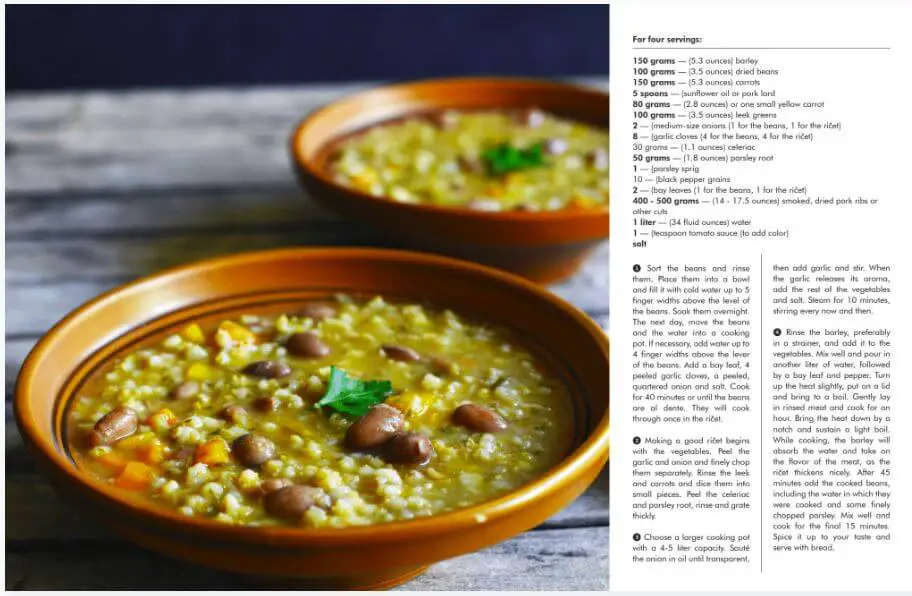Ljubljana related
April 15, 2019
What fried rice is to the Far East bread dumplings are to Central Europe: a culinary answer to the problem of staple food leftovers. The solution in both cases comes in a dish that is often a favourite of both kids and adults. Bread dumplings are usually served with meat and gravy, mushroom sauces or goulash, in our case Segedin.
As usual, there are certain things one wants to pay attention to in order to avoid some unwanted results. With bread dumplings, this means we don’t want the mixture to be too sticky when shaping it into balls, or too hard once boiled and ready to eat. And we just might have found the perfect recipe.
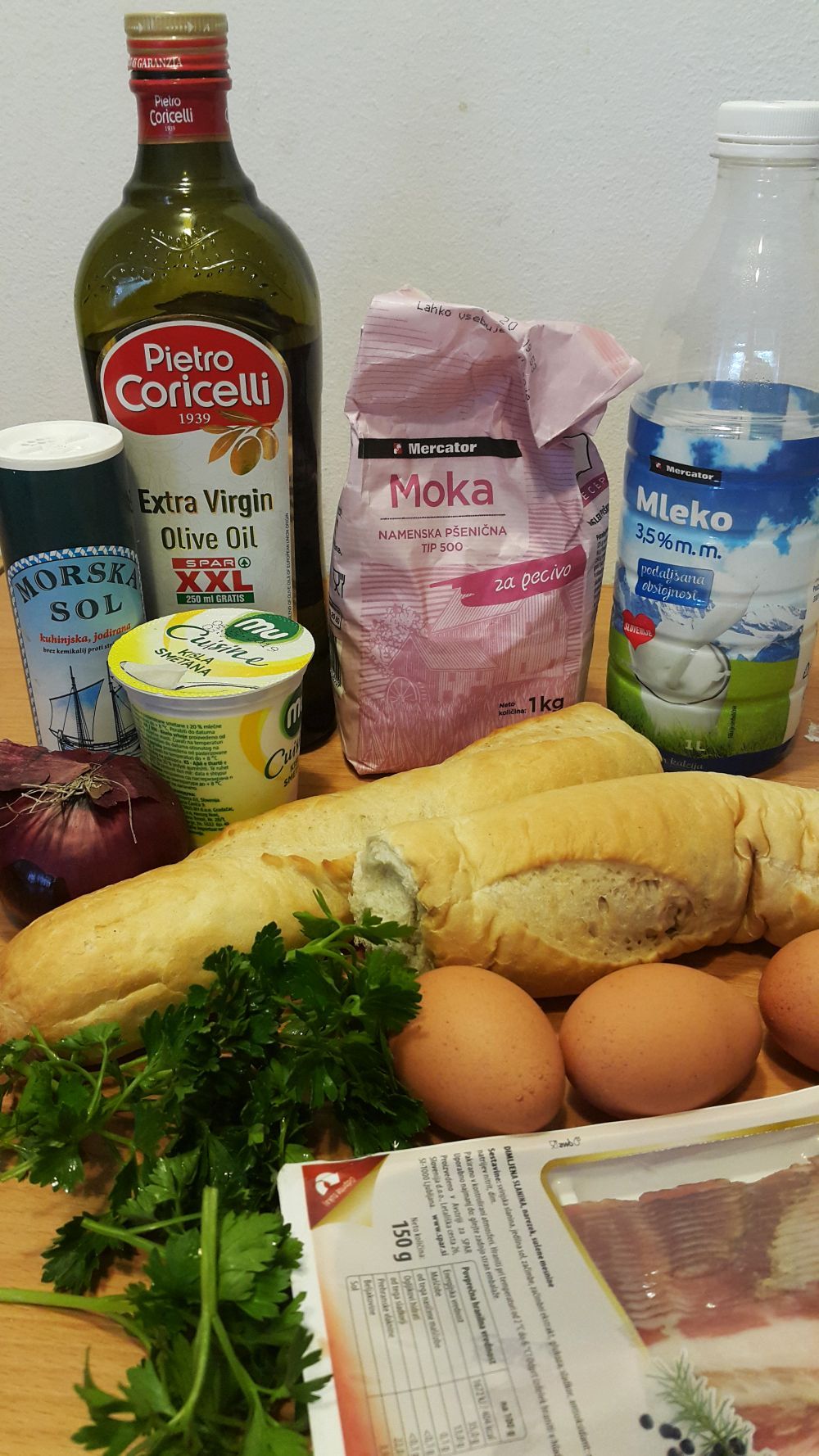
Chop the onion and bacon and stir fry in olive oil till the onion softens. Dice the bread and add it to the pan. Let it fry a little and soak the fat in.
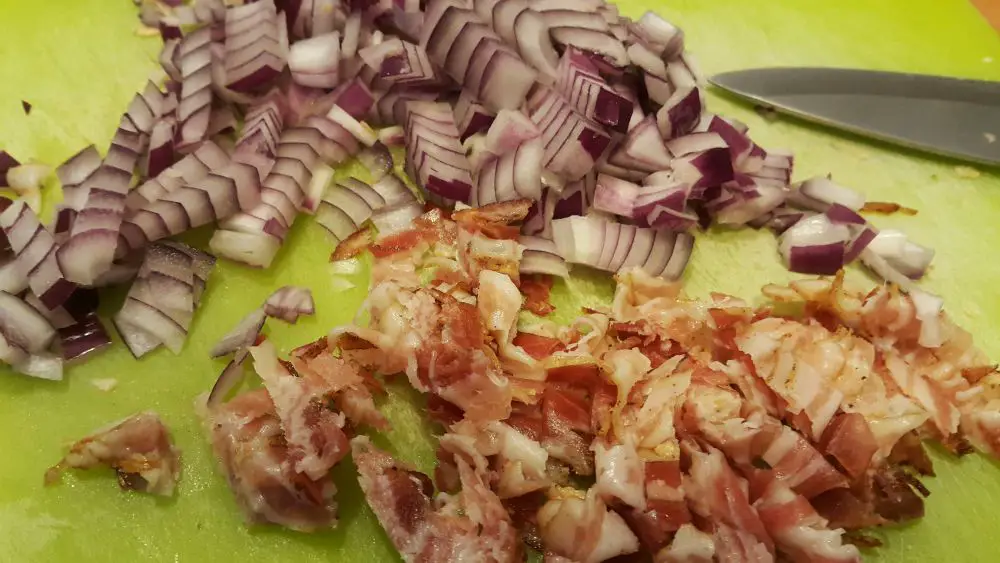
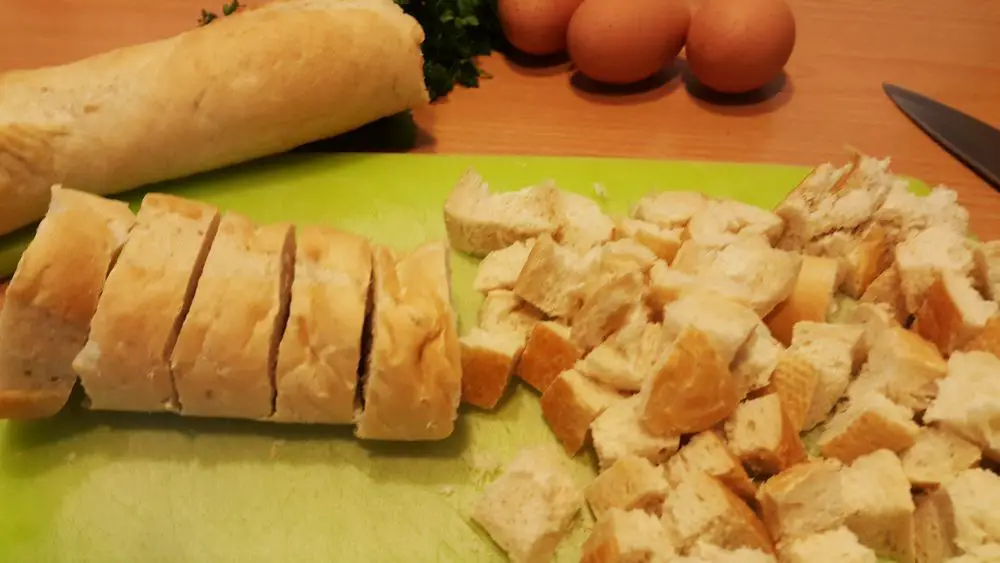
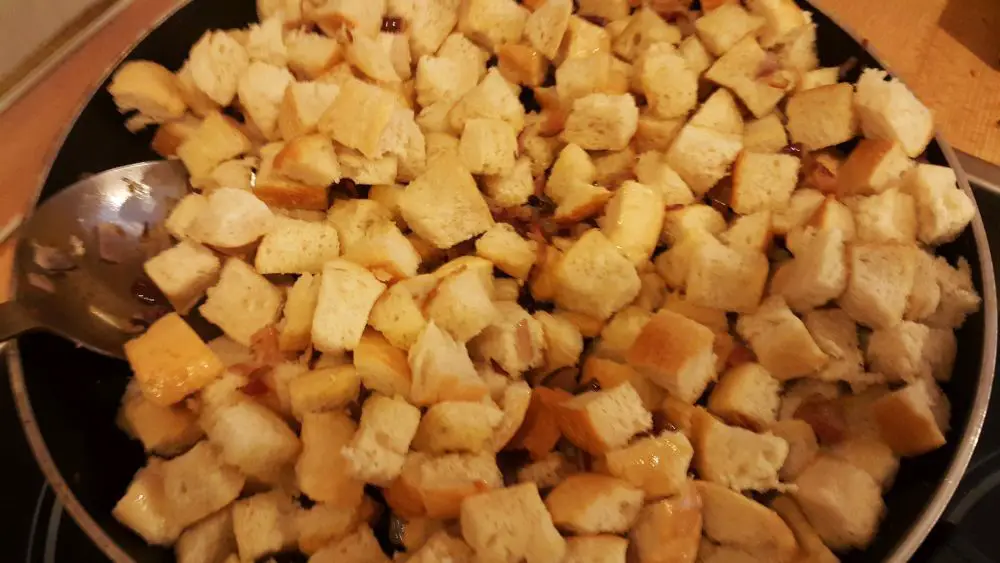
Move the bread mixture into a bowl and wait till it cools down. Mix the eggs with the sour cream and milk and stir into the bread mixture. Add flour and parsley and mix again. Leave it to rest for 10 to 15 minutes, then shape into balls using your hands.
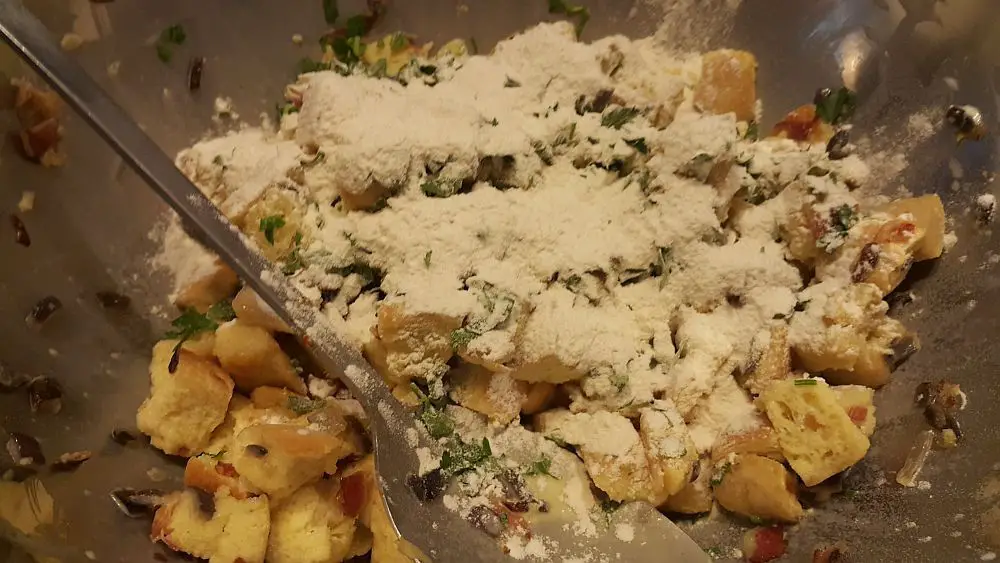
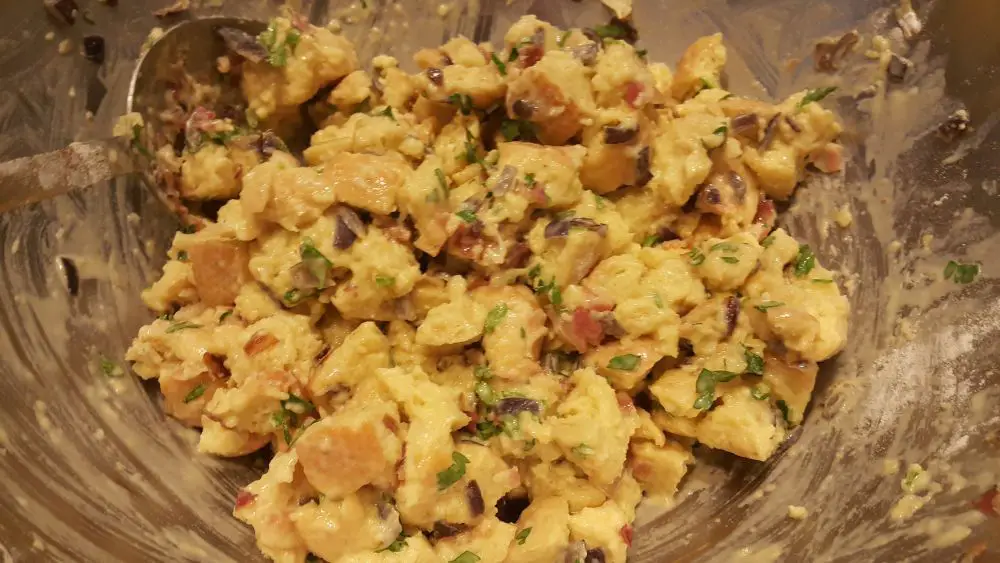

Boil the dumplings in salted water for about 10 minutes, then take them out and serve them with a mushroom sauce, meat and (lots of) gravy, goulash or Segedin.
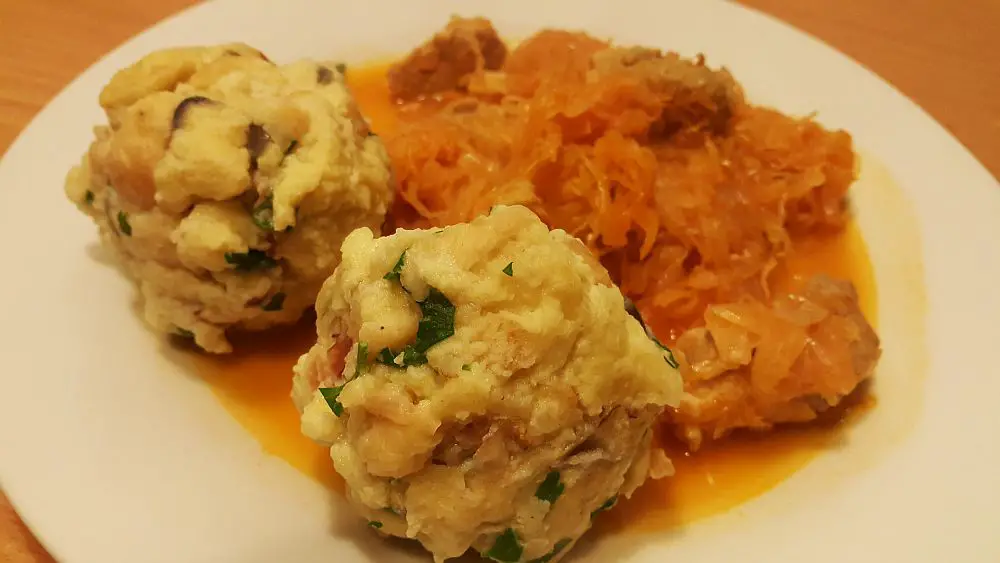
Dober tek!
April 15, 2019
This dish made of sauerkraut and meat originates from the Hungarian side of the Austro-Hungarian Empire, and is especially common among the Slavic people who were once part of the Empire.
There is some discord, however, about the actual origin of the dish, and hence about the right name that goes with it. In Slovenia, and as internet searches would suggest, Slovakia and the Czech Republic as well, it is believed that the dish originates from a Hungarian town called Szeged, which is why it is called Segedin or Szeged Goulash. In Hungary and the rest of the Yugoslav Balkans, it is believed that the dish was accidentally invented by a 19th century Hungarian poet and journalist, Jozsef Székély, which is why it should also be called székelygulyása or Szekely goulash. The story goes that Székély once walked into a guest house in the late hours of the evening and was told they had nothing left but some sauerkraut and cooked meat. “Put both together and heat them up” was his order, and thus Szekely goulash, (Segedin in Slovenian and Slovakian) was born.
Most people in Slovenia are not familiar with the story and don’t place much importance on the origin of the dish either, but rather take it as their own, as one of the varieties of ways of to ingest sauerkraut in the wintertime. As far as we are concerned, it is one of the best ones, easy to make and especially good when served with bread dumplings.
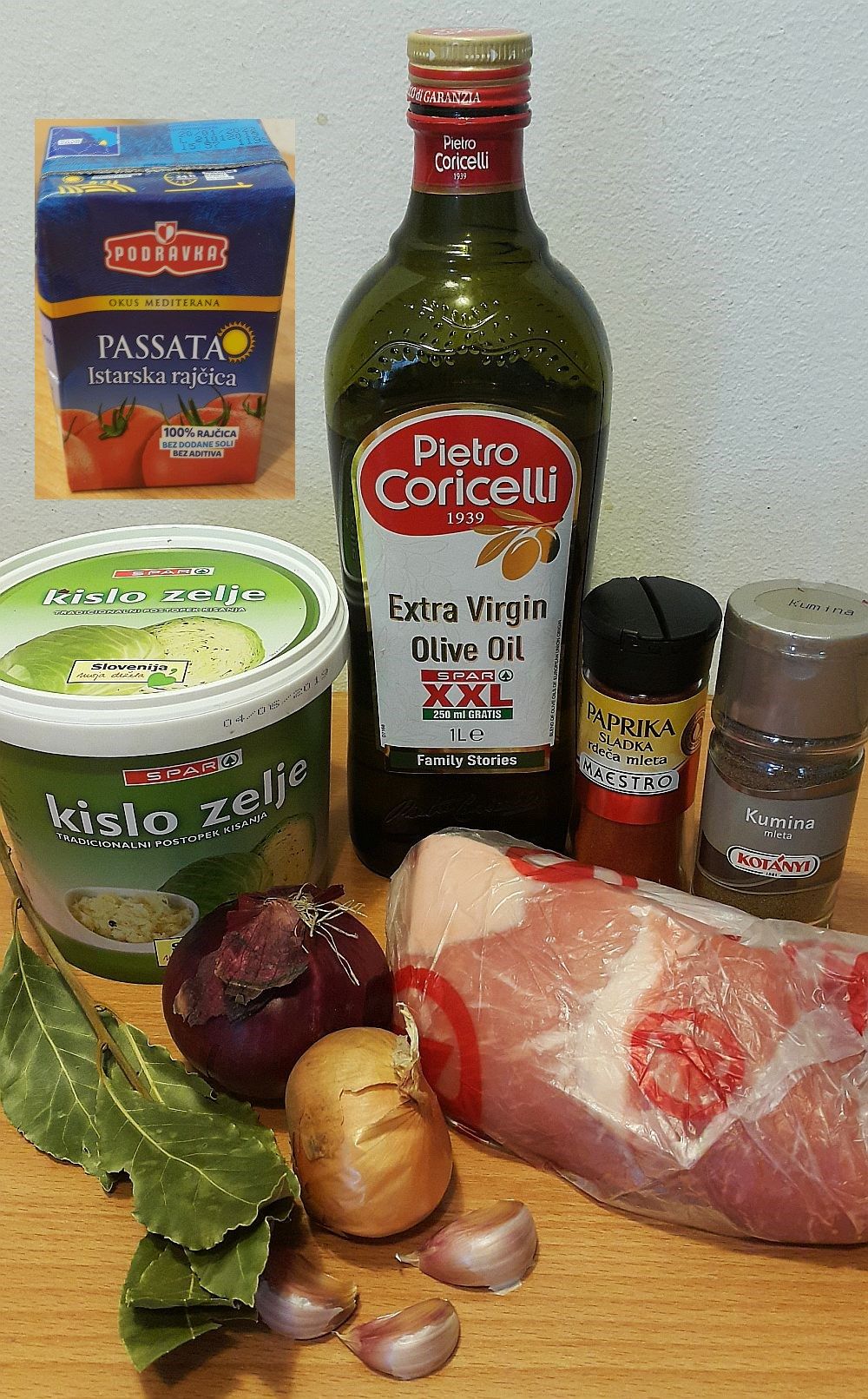
Dice the onion and some garlic, stir fry in the olive oil until the onion softens up and becomes glassy.
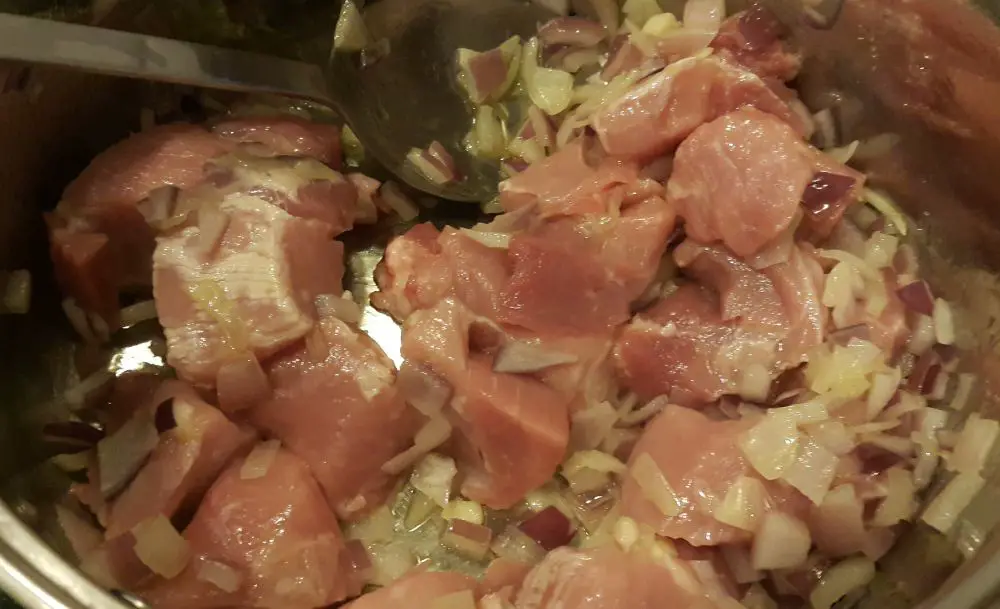
Add diced meat and stew in its own juice for 15-20 minutes until it softens. Then add paprika, caraway and passata and stir it all with the meat. Add sauerkraut, bay leaves and enough water so that everything is more or less submerged.
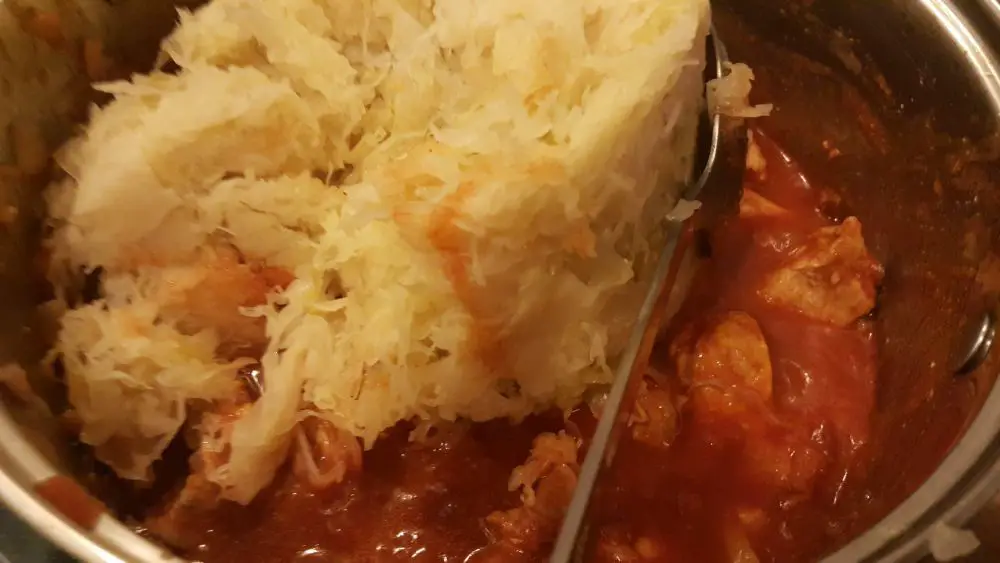
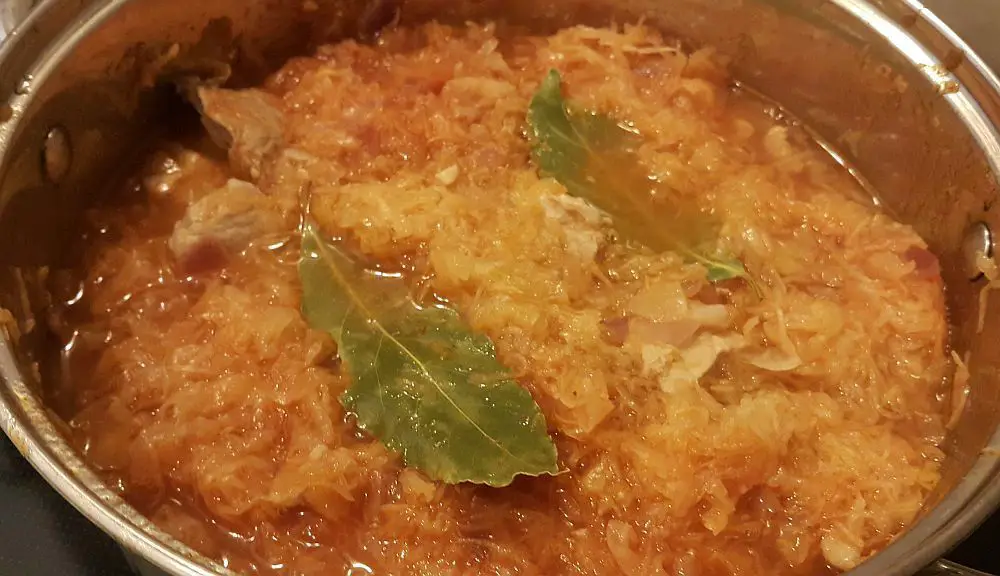
Let it simmer for another hour or so, then serve with bread dumplings.

Dober tek!
April 3, 2019
This week’s recipe presents a cake which simply cannot disappoint. While we advise you to pay attention to some details, especially the baking part, the reward comes in the mousse-like cheese flavoured texture which combines nicely with the various berry fruits that are currently entering our local markets.
The cake recipe is loosely based on so-called Japanese cheesecake, also known as cotton cake, although our recipe calls for using a bit more cream cheese. Consequently, our version of the cake has less elasticity and will almost certainly crack at the top, which is nothing to worry about unless you want to create a Hello Kitty out of powdered sugar on it.
As already suggested, the cake itself is just as delicious if eaten without any filling, which is great if you’re worried you might not have enough time to follow the whole recipe presented here.
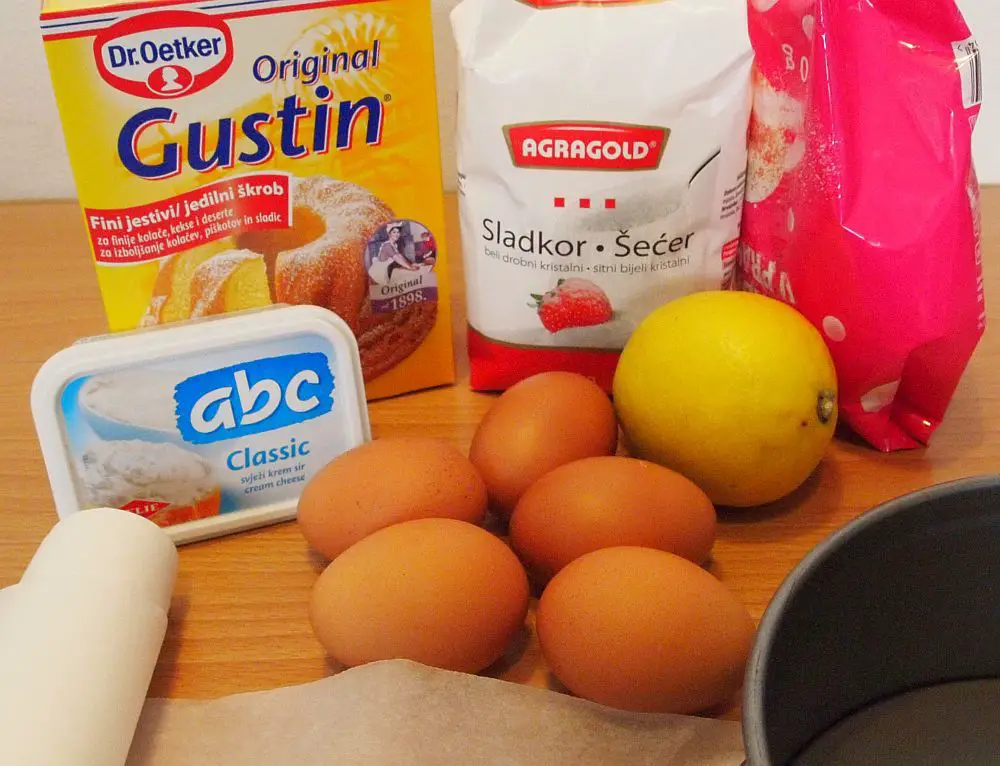
Ingredients (cotton cheesecake; for a 17cm cake pan, about 6-7 cm high)
The amount of ingredients listed above is quite small even for the small cake pan we’ve got. If your cake pan is significantly bigger we suggest you double the ingredients. If we were baking this cotton cheesecake without planning to put any cream inside and over it, then we’d probably increase the amount of ingredients by 1/3.
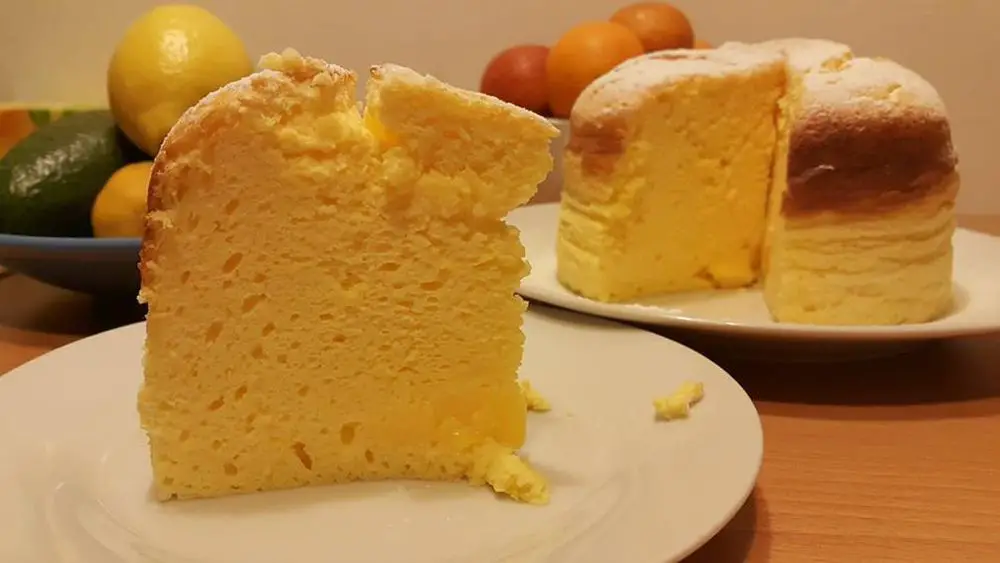
The first thing before you do anything else is to turn the oven to 175 degrees Celsius. Set the rack at its lowest point so that the paper sticking out of the cake pan will not touch the ceiling of the oven. Also get the big pan and the hot water ready, or even better, place in into the oven so that when your cake is to be baked you will just place it into the hot water that’s already inside. To get the idea, here’s a picture of our cake just before we took it out of the oven.
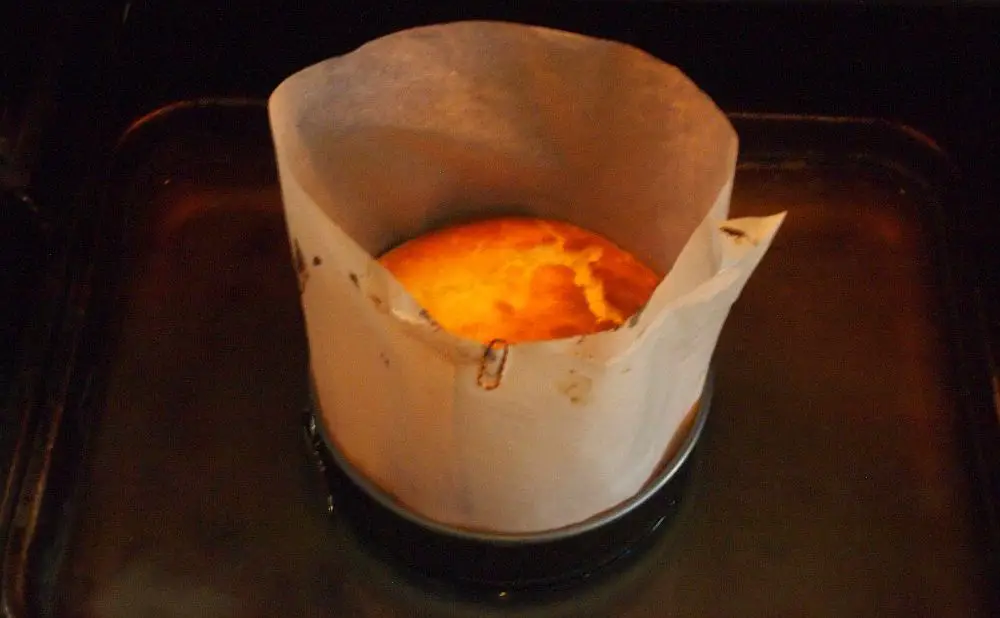
It is very important that the oven is fully heated and the temperature doesn’t drop much once you open the door and place you cake inside. The fluffiness of this cake is due to the egg not based on flour and baking powder, and thus it is sensitive to inconsistencies in temperature (a little like a soufflé).
The second important thing is that we’d like to keep our cake moist, not dry, which is why we’ll place it in the water - so that the bottom bakes slowly and doesn’t burn - and leave the sides of baking paper high - so that it doesn’t burn and dry out at the top. Baking paper will also prevent the cake from sticking to the bottom and the sides, and will also help it retain the shape while it cools down.
Before we start mixing the ingredients, draw around the bottom of the cake pan on the baking paper, cut it out and place it on the bottom of the pan. Press it into the corners to form a 0.5-1 cm high edge at the side.
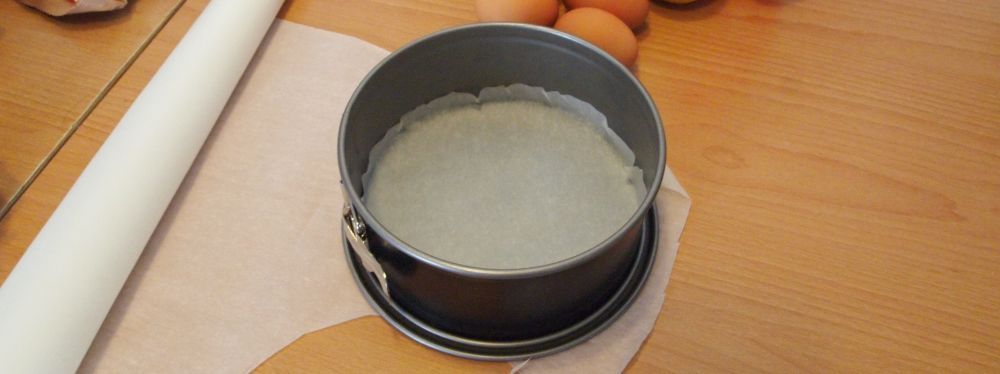
Then cut a long enough wide strip and place it outside-straight-side down into the pan and fix together at the top with a paper clip. Make sure it is wide enough so once you pour the cake mix in it will fit the width of the tray.

Then move to the cake mix: separate egg whites from egg yolks. Make sure no yolk escapes into the egg whites as then you won’t be able to beat them firmly. First beat the egg whites and when they start forming peaks, but are not completely hard yet, start adding castor sugar. The egg whites are beaten when they stay inside if the bowl is turned upside down.

Beat the egg yolks and one by one mix in the sugar, lemon jest with juice, corn starch (stir in before mixing, or it’ll be blown all over your kitchen) and cream cheese. Put your mixer aside and take a big spoon, preferably a wooden one. Slowly stir in 1/3 of the egg whites and when they are more or less evenly spread throughout the mixture add the rest. Adding the egg whites in two rounds will allow your mixture to retain the maximum amount of air, which is what will make your cake fluffy.

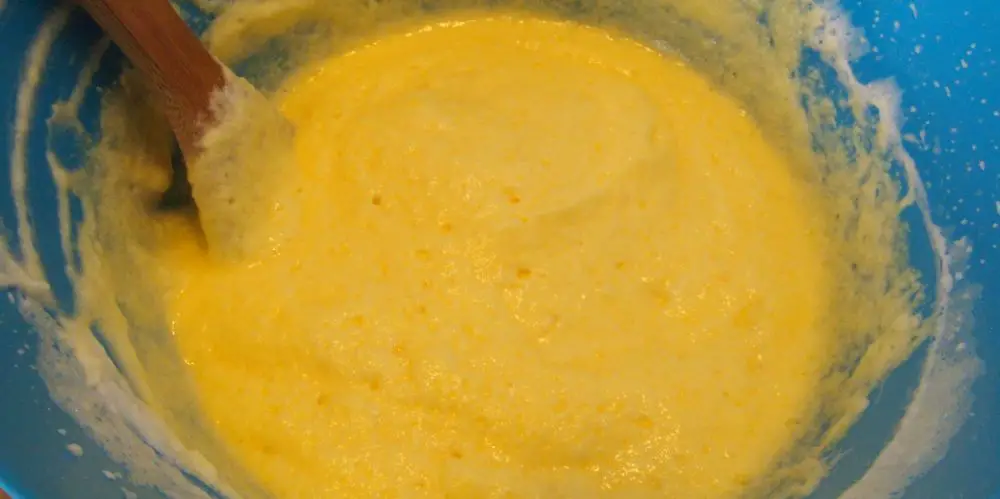
Pour the mixture into the baking pan, open the door of the preheated oven and place it into the pan of hot water. Close the door and do not open it until the cake is done. Bake for the first 20 minutes at 175 degrees Celsius, then another 15-20 minutes at 150 degrees. After 35-40 minutes turn the oven off, and let the cake rest inside for another 10 minutes. Then take it out of the water and let it rest outside until cool enough that you can release it from the cake pan. Leave it wrapped in paper till more or less cool.
Once cooled, turn it around carefully and remove the bottom paper first, then place it on your final cake plate, and remove the surrounding side paper as well. Cut it in the middle and put the upper part to one side.
Here you can get into a bit of a trouble if the cracked top starts falling into pieces. If it doesn’t now, it might when you’ll be placing it back to the top of the cake. Don’t panic, the cream will keep it together, just make sure you don’t break it too much.
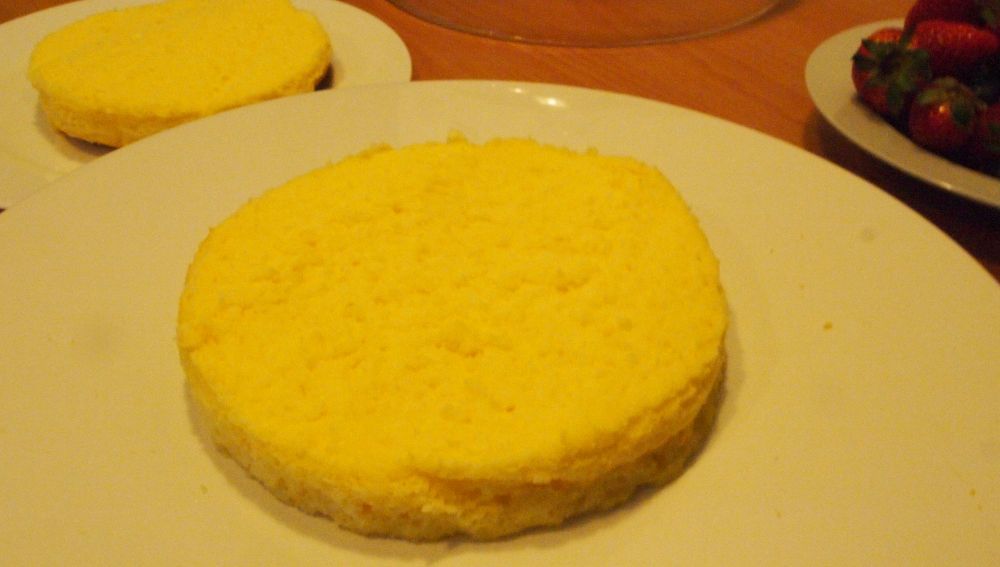
Now the filling.
Ingredients
Although we could just use all of the ingredients to make one kind of covering, we did not for the following reason: fruits such as pineapple, mango, papaya and kiwi contain a gelatine-melting enzyme. We were not planning to put any of those inside the cake, but wanted them at least for the decoration. Which is why the cake had to be covered with another layer of fresh cream.
So we beat the fresh cream first, add half the sugar then beat some more until done. Separately mix lemon juice and zest into the fresh cream and add gelatine. Stir for about a minute, then add the rest of the sugar, take a spoon and gently stir in half of the beaten fresh cream.
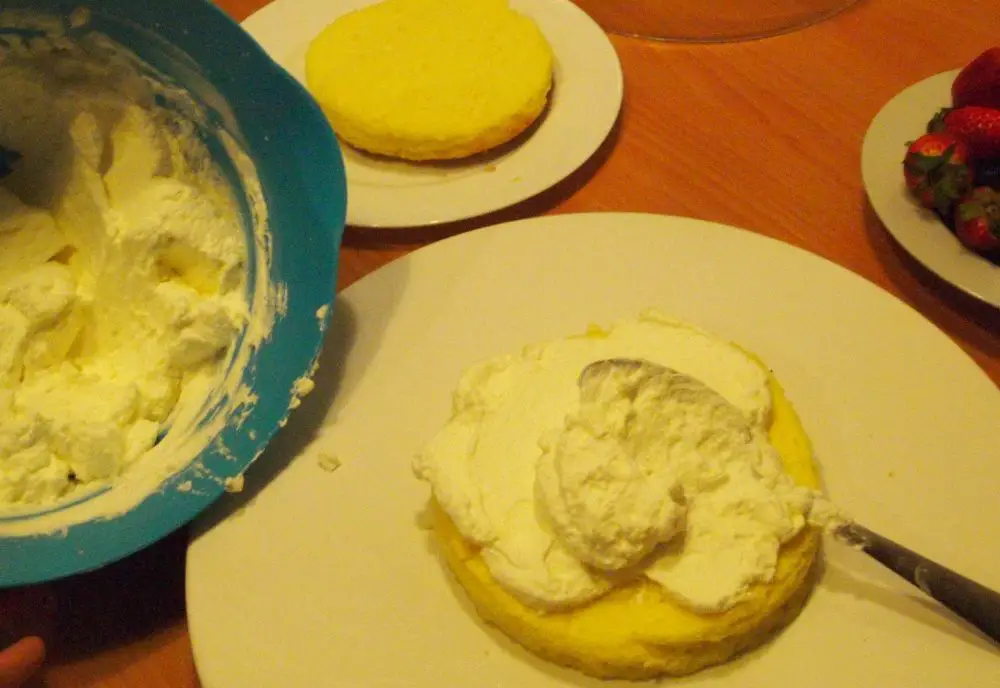
Spread some of the cream over the bottom layer of the cake, cover it with a layer of fruit – press it in a little and put another layer of cream at the top. Put the second layer of the cake on the top of that and cover the top and sides of the cake with the remaining cream. Then spread the remaining fresh cream on the top of that, decorate with fruit and place into the fridge for 2-3 hours.

Dober tek!
Last November we reported that Šepla Vodovc, the woman behind the Culinary Slovenia workshops, food walks and week-long tours, was planning to launch a cookbook that'll be your guide to recreating traditional dishes from all over the country. Today that project reached another milestone, with the book now ready to order on Kickstarter.
Launched just this afternoon, in only a few hours it's already around a quarter of the way to achieveing its target, with $1,232 having been raised so far towards the goal of $5,000, with the Kickstarter running until April 26, 2019.
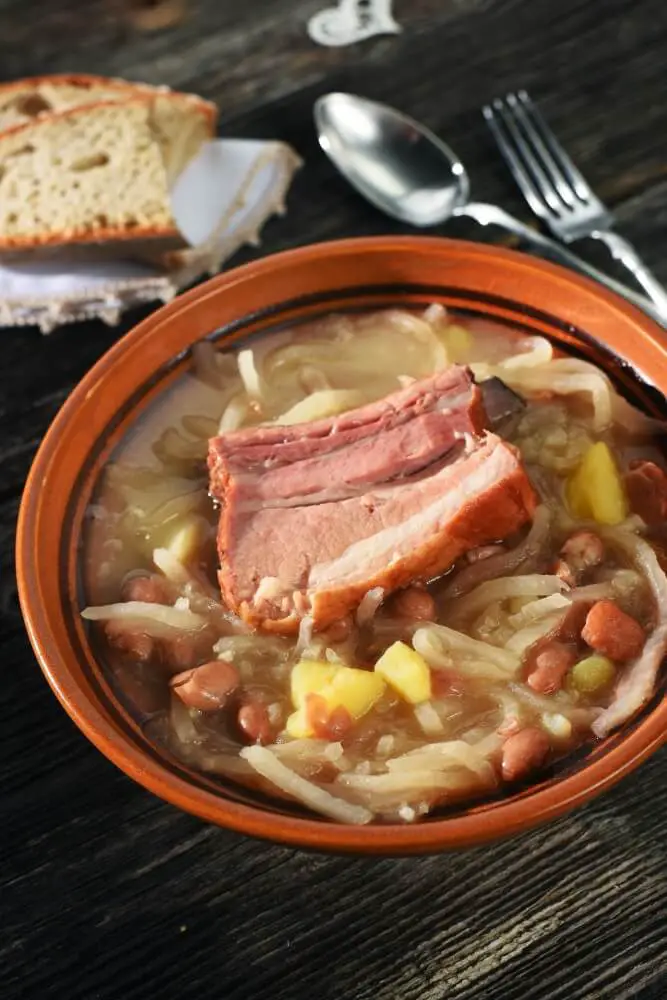
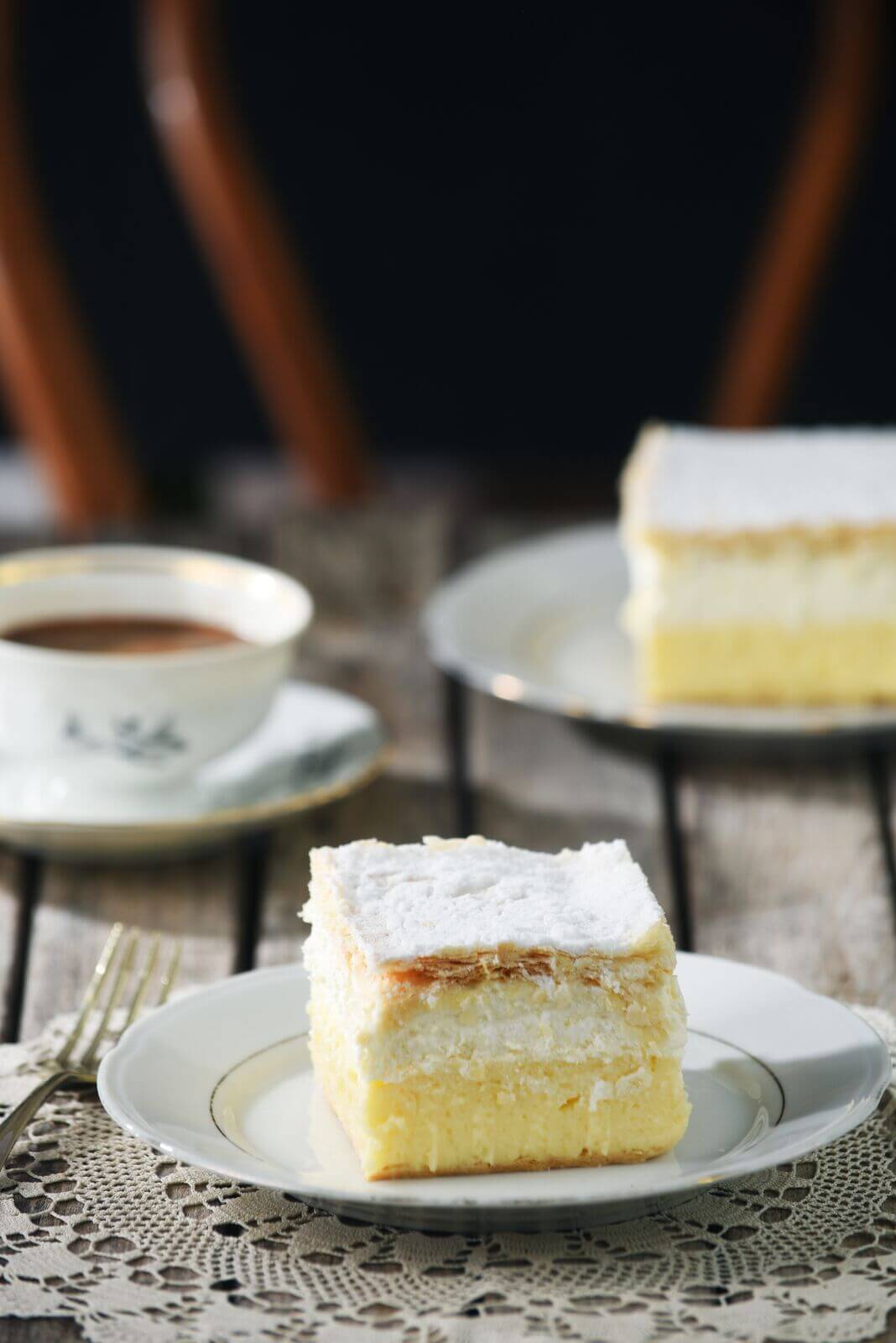
The Kickstarter price of the each book is $25, but for a limited number of people a pledge of just $20 gets you an early bird price on the book, plus worldwide shipping, while pledging more will see you receive the book along with a special Cook Eat Slovenia apron.
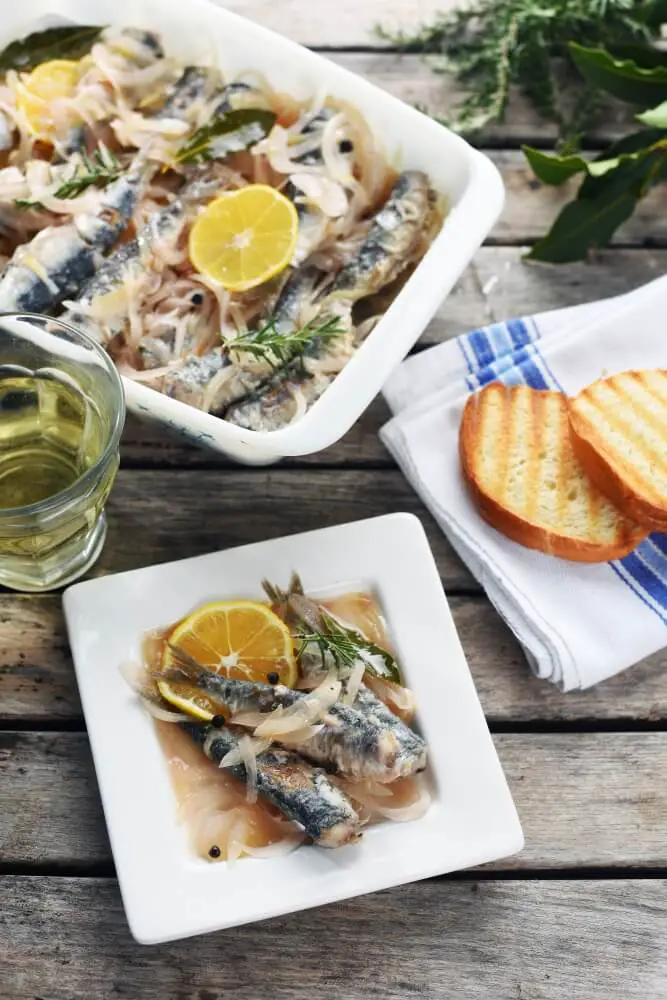
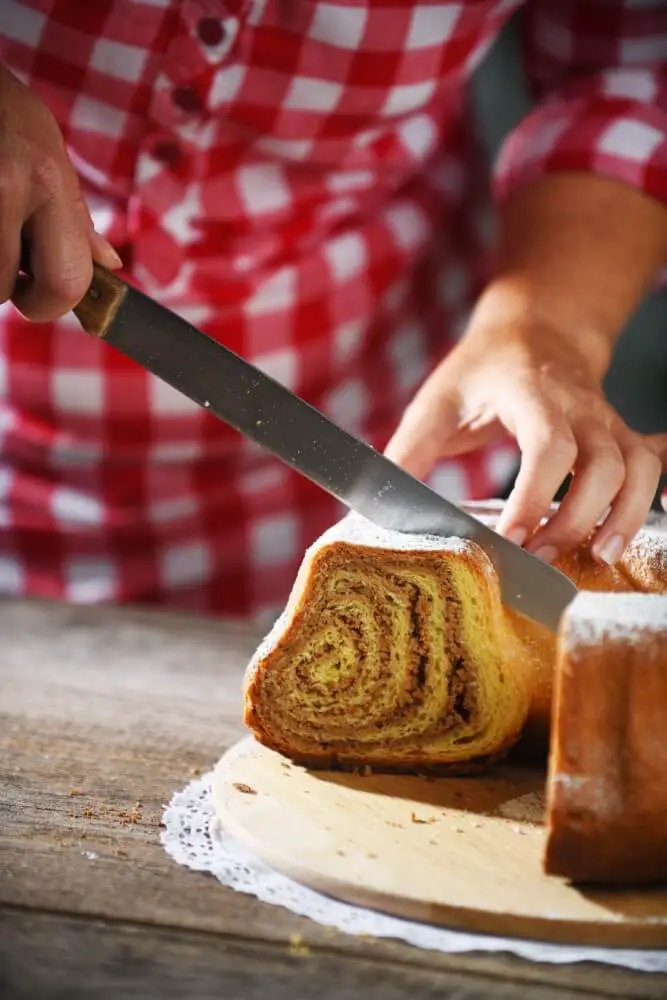
Beautifully designed by Gregor Žakelj (VGB), the book is in full colour, with each of more more than 100 dishes shown in photographs from Mateja Jordović Potočnik. Presented in a clear, attractive manner these are recipes that you'll be inspired to use and enjoy, bringing the tastes of Slovenia from all four seasons and all of it's culinary regions. And with the country set to be an official European Region of Gastronomy is 2021, now's the ideal time to start learning about some of the hidden gems of the continent's cuisine, and where better to start than with Cook Eat Slovenia – The Cookbook?
You can support the Kickstarter and order your copy of the book here.
February 15, 2019
Broad beans originate from the Mediterranean and have been cultivated for thousands of years before they became almost forgotten in the last century or so. Until potato was introduced, they were one of the main staple foods in the Slovenian diet and were later often associated with the food of the poor, which is perhaps one of the reasons for their post-war decline in popularity. The second reason for their decline, as restaurant owner Roberto Gregorčič once speculated for Delo, might lie in a switch from polyculture to monoculture in farming, which renders these beans prone to aphid infections.
In recent years, with environmentalism and comeback of “the local”, many of the almost forgotten plants are being rediscovered, and so are broad beans, which we didn’t even need to go to search for to the central market place, but just got them, local and organic, in the nearest supermarket.
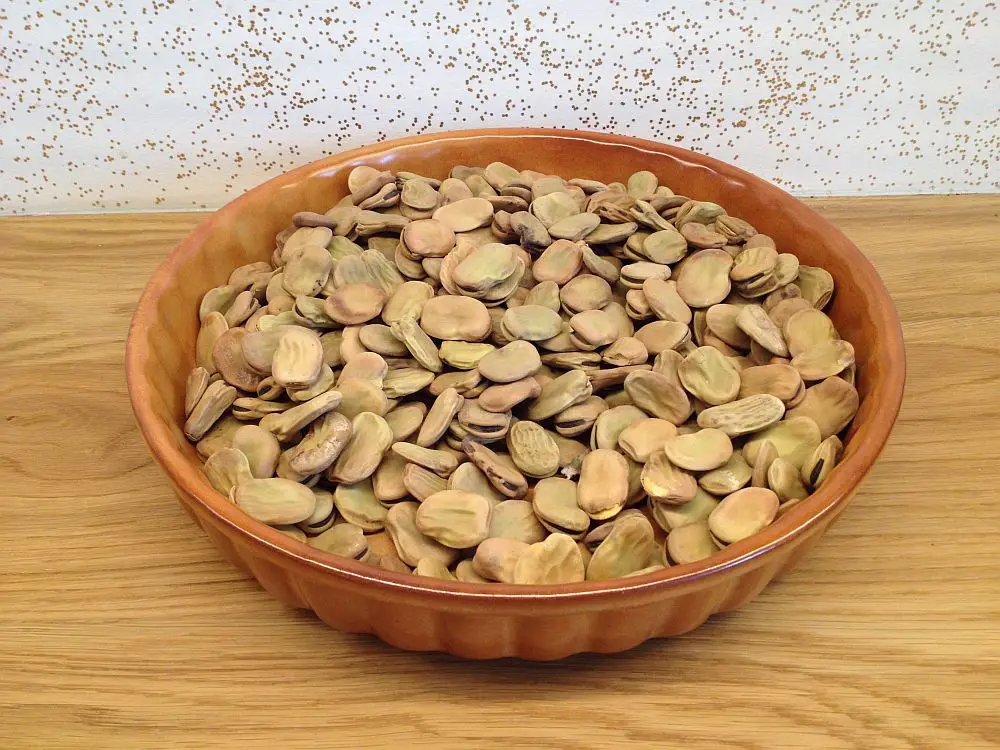
An important feature of the broad bean is that it's got quite a thick skin, much thicker than the ordinary bean, but it can be easily removed, especially while beans are still warm. They can be cooked and served in similar ways as ordinary beans, in a simple bean salad, or as an ingredient in more complex dishes, which is what we are aiming for today.
To get the logic behind this recipe, imagine a classic Eastern Adriatic side dish for fish: chard with potato. We’ll replace potato with broad beans and chard with spinach, as fresh chard is not available in this season. We also won’t be making fish but will enrich our side dish with some interesting flavours so that it will serve as a salad/main dish on its own: truffles, anchovies (leave these out if vegetarian) and red wine.
Ingredients:
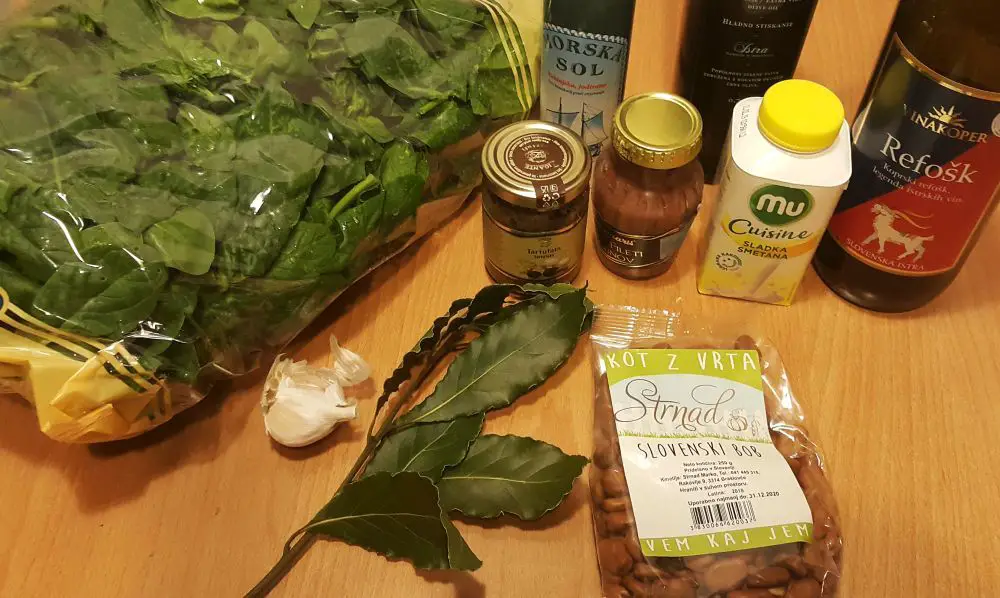
If dry, the broad beans need to be soaked first. Place them in a pot of water, cover and leave in the fridge overnight.
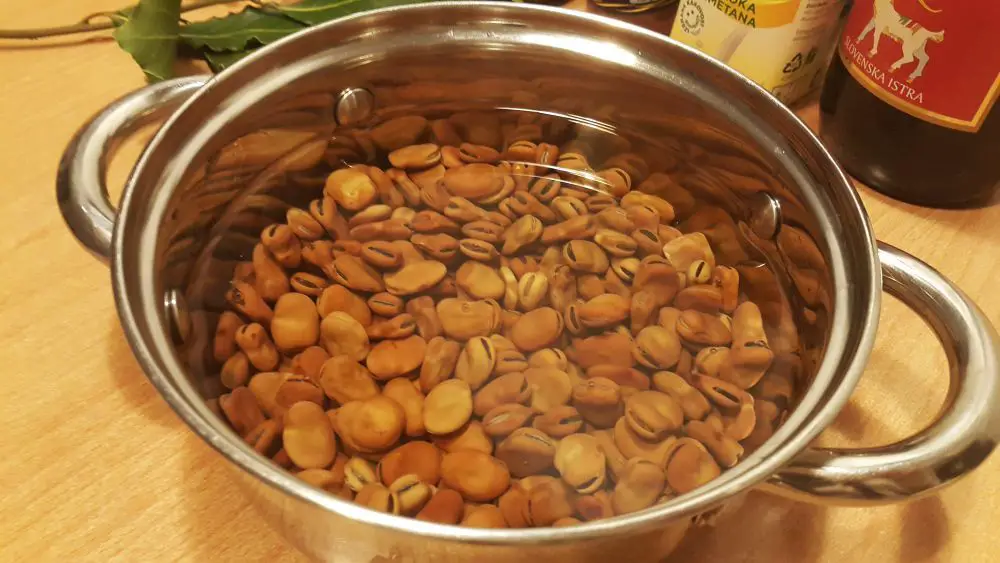
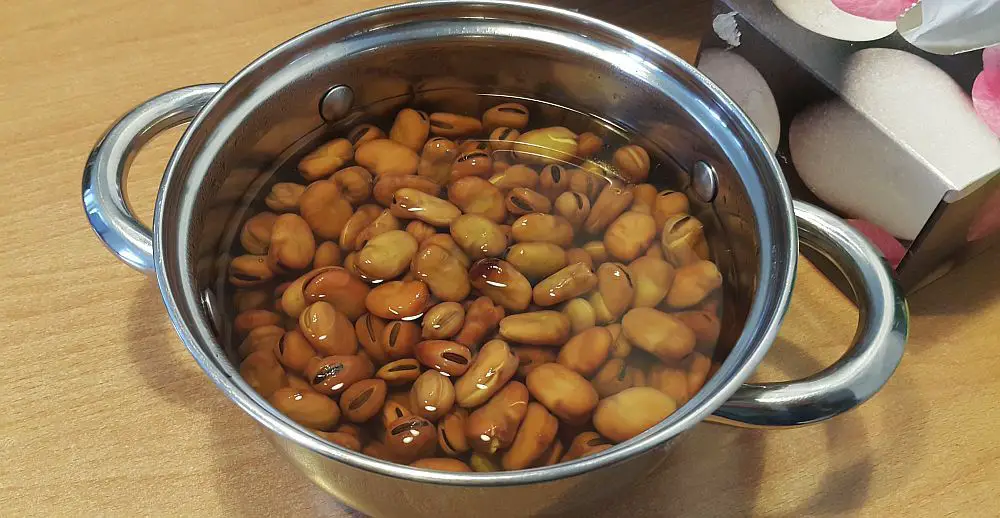
Then replace the water, add bay leaves and cook them for an hour, or until cooked. Then peel them by removing the black dot first. They should then jump out of a skin quite easily.
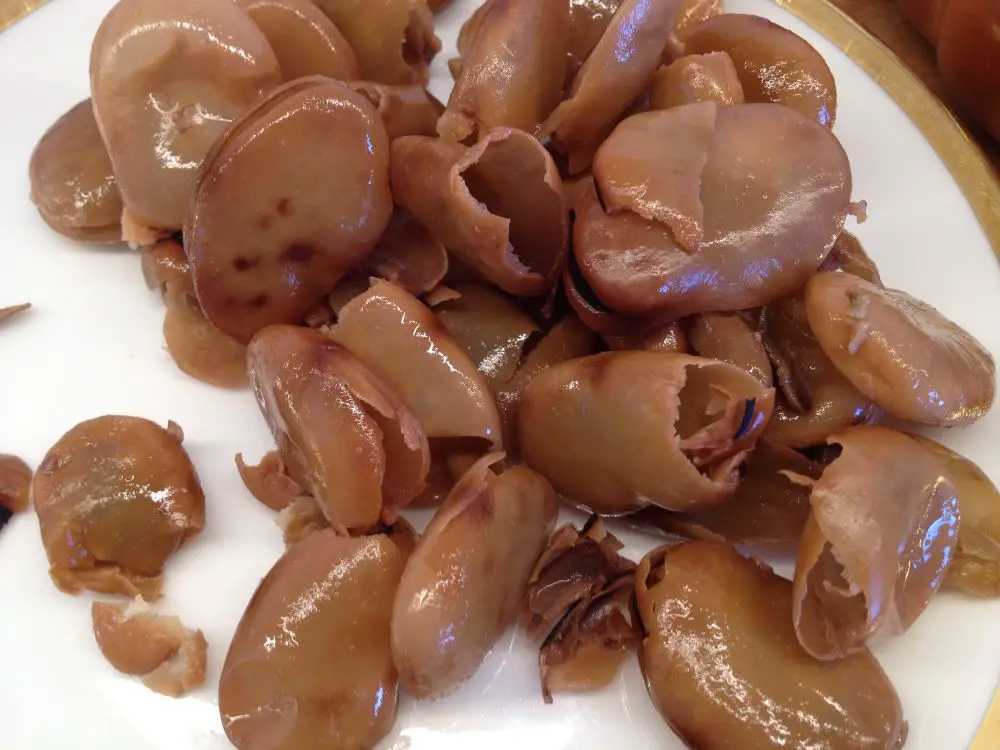
Chop the garlic and stir fry till it smells good. Add blanched chard (or spinach) and broad beans. Broad beans can be semi or fully pureed before being added to the spinach. We just mashed them a little. Add the rest of the ingredients and stir a bit longer until the alcohol from the wine is all gone.
Serve with a glass of red wine.
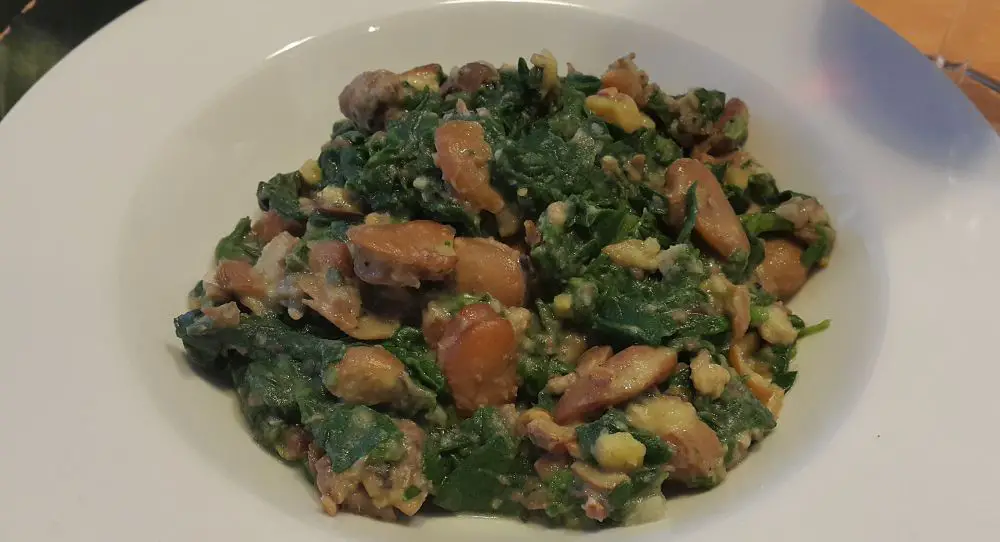
Dober tek!
November 4, 2018
Chestnuts are still widely available in stores these days, and some lucky folk can even go and pick them in the forests across the country. So we thought this might be a good time for a chestnut cake, especially since St. Martin Day (Martinovanje) is approaching, and the cake is a very welcoming addition to a table full of the traditional harvest feast dishes.
Chestnuts are quite a delicate ingredient. Peeling and pureeing them must take place while they are still warm, and can even then make quite a lot of mess. To avoid such problems sometimes people boil chestnuts in rounds of ten, so that they don’t cool down too fast and cause problems when peeling. We did, however, just boil them all together and avoided peeling by simply cutting them in half and squeezing the meat out as we don’t need them to stay in one piece for a puree to be made. They did, however, cool down too much for a puree to be made smoothly, which is why we decided to use chopped almonds to cover the inconsistencies of smoothness in the cream, and it turned out to be quite a good trick.
There is plenty of variety in making a chestnut cake, but the basic ingredients that shouldn’t be left out are chestnuts, rum, fresh cream and dark chocolate.
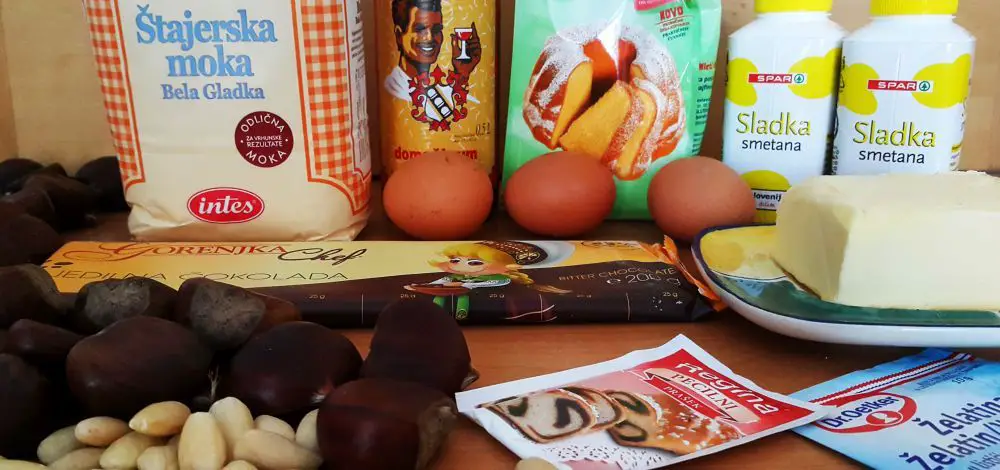
Ingredients:
The first thing to make is a chestnut puree: cook the chestnuts for about an hour or a bit longer if they are as big as ours. Take them out of the boiling water, cut each in half and squeeze the meat out while still warm. Make sure to remove any skin that comes out along with the meat. How deep into the nut this skin grows depends on the chestnut tree, so those lucky enough to live near a forest with chestnut trees should pay attention to the nuts picked under specific trees – some are better than the others in this respect.
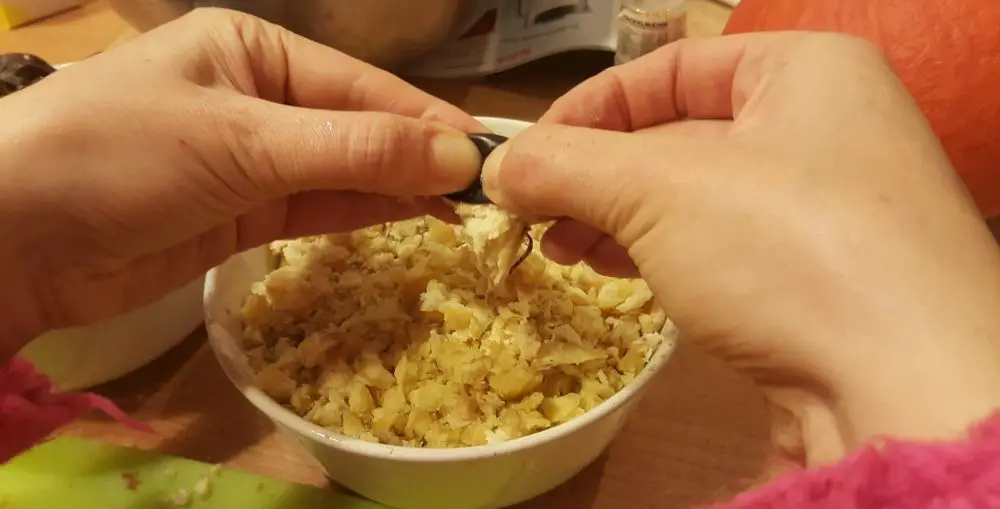
The best way of making a puree is to send (warm) chestnuts through a food mill –I hear some use garlic press instead – or at least a food processor. Blenders usually work for more liquid substances, but unfortunately that’s all that was available to us. So we used it: we added some sugar and fresh cream to the chestnut and blended the mixture a bit, then opened and mixed it with a spoon, blended it a bit more, and so on until we thought the puree was more or less without lumps. Not an ideal circumstances, but as announced at the beginning of this text, we covered this inconsistency with chopped almonds added to the cake dough.
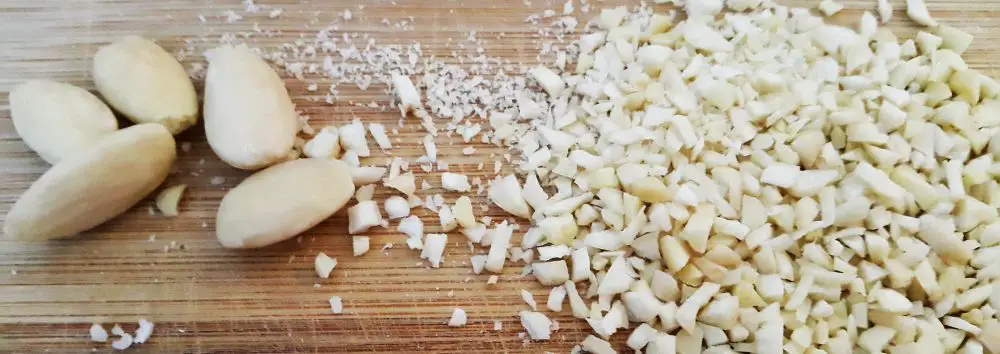
For the dough, preheat the oven to 175 degrees and spread butter and flour on the baking tray. We had two small baking trays instead of a one big one, which comes in handy when experimenting like we tend to do – a major mistake can only cost you half the cake not a whole one. Besides, it appears to be easier to cover a small cake in chocolate paper than a big one, a procedure you can observe at the end of this recipe.
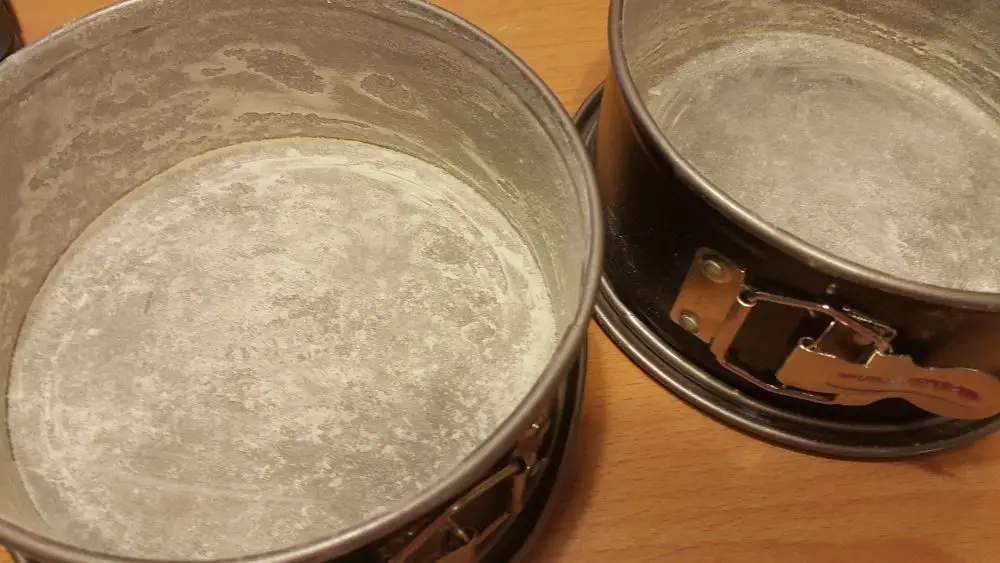
For the cake dough, separate egg whites from egg yolks and beat the egg whites until soft peaks form, add half the sugar and beat until stiff. In another bowl beat egg yolks until they become foamy and bright yellowish, then slowly mix in the remaining sugar, butter, chestnut puree and flour – stir it in before using a mixer so that it doesn’t get blown all over the kitchen. Into this mixture then slowly stir in 1/3 of the egg white foam, and after this is evenly spread add the remaining 2/3. The last thing to add, carefully, are the chopped almonds.
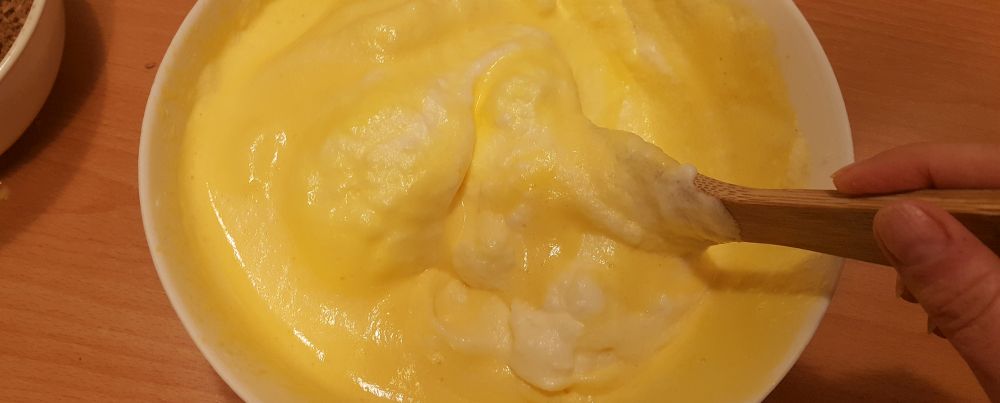
Place the foamy substance into the baking trays and bake at 175°C for 30 minutes, then turn down to 160° and bake some 20 minutes more. Then turn off the oven and leave the cake inside for another half an hour or so, so that it doesn’t collapse completely. Take out of the oven and cut in half.
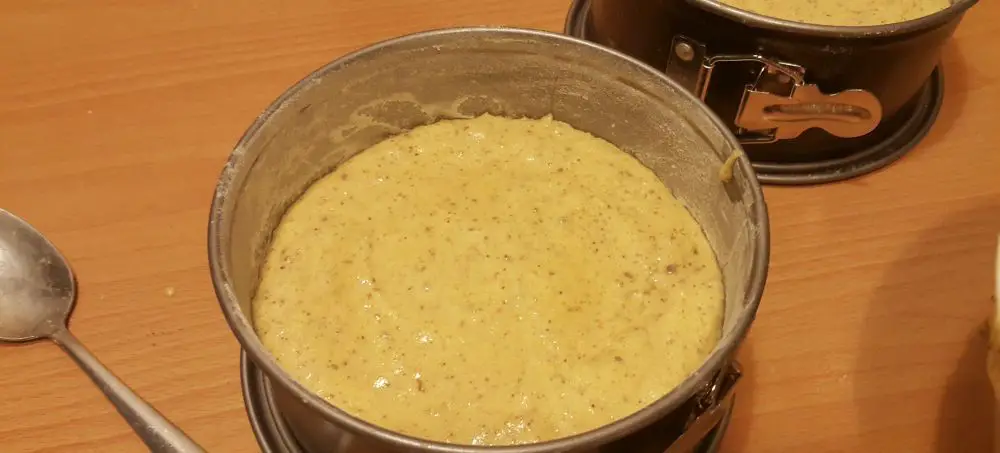
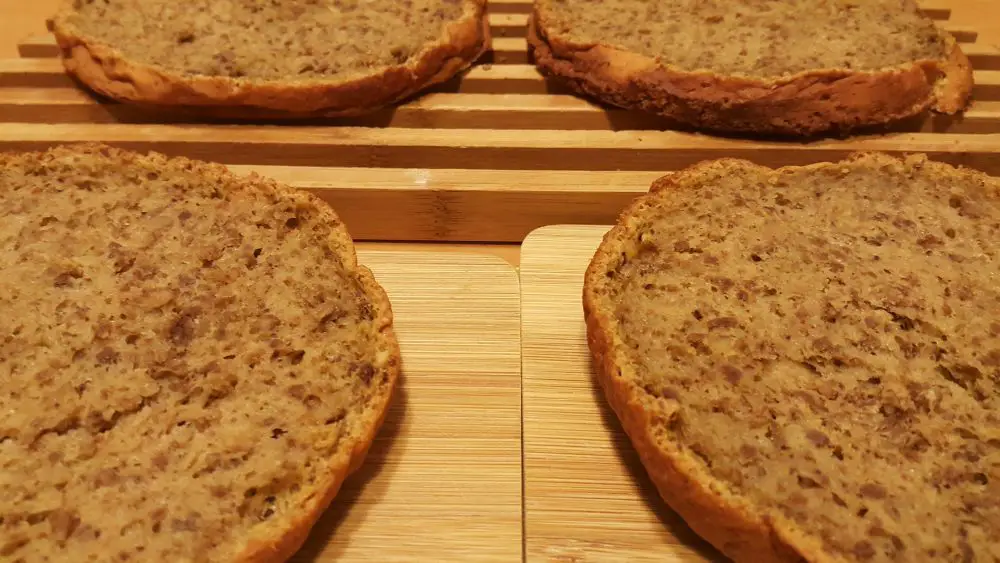
The cream. Put 250 ml of fresh cream on the stove and melt 80g of dark chocolate in it.
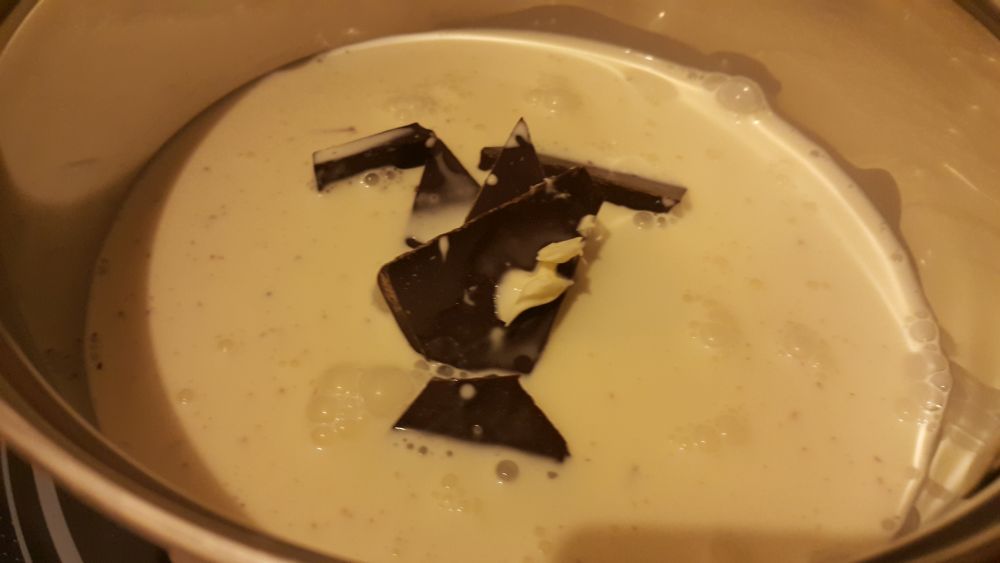
Cool this down and place it in the fridge until completely cold.
Then beat it into a cream and hand stir in the chestnut puree. At this point it became evident that our puree was full of little lumps that looked as if the cream had turned into a curd, but we didn’t panic and simply added a bit of rum to both the cream and the cook.
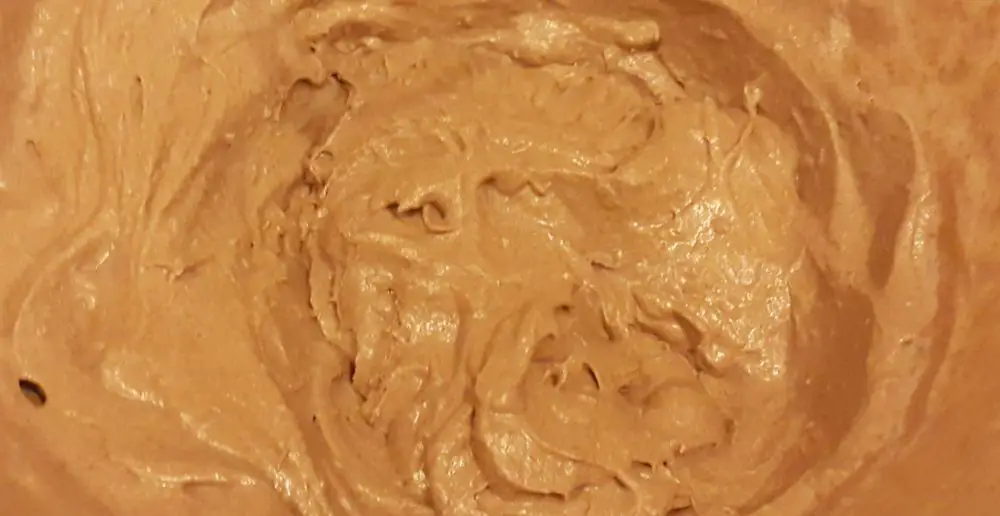
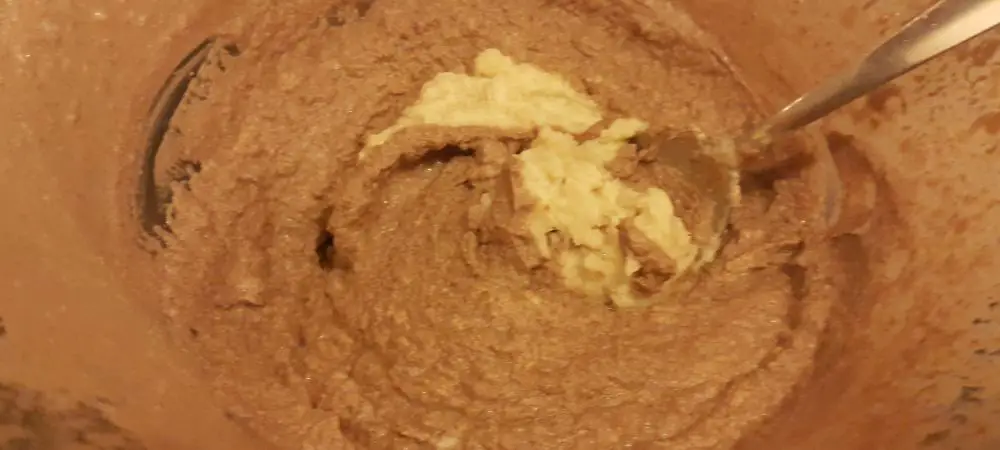
Beat the fresh cream and add 1/3 to the mixture, followed by the remaining 2/3.
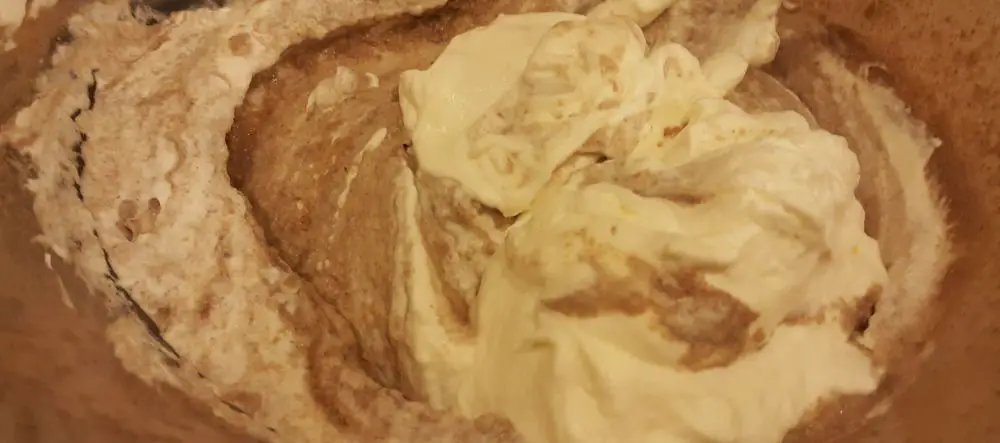
If you are worried that the cream will not keep the cake together, you can dissolve two sheets of gelatine in some warm water and add it to the mixture, although with smaller cakes it worked just as well without it.
You can now moisten the cake layers with sweet, rummy water and then put the cream in between and on the top of the cake layers. Then you can simply sprinkle the cake with some chocolate powder or, much better, decorate it with a covering sheet of chocolate which will also contribute a great deal to your cake’s flavour, as well as impressing people who don’t know how it’s done.
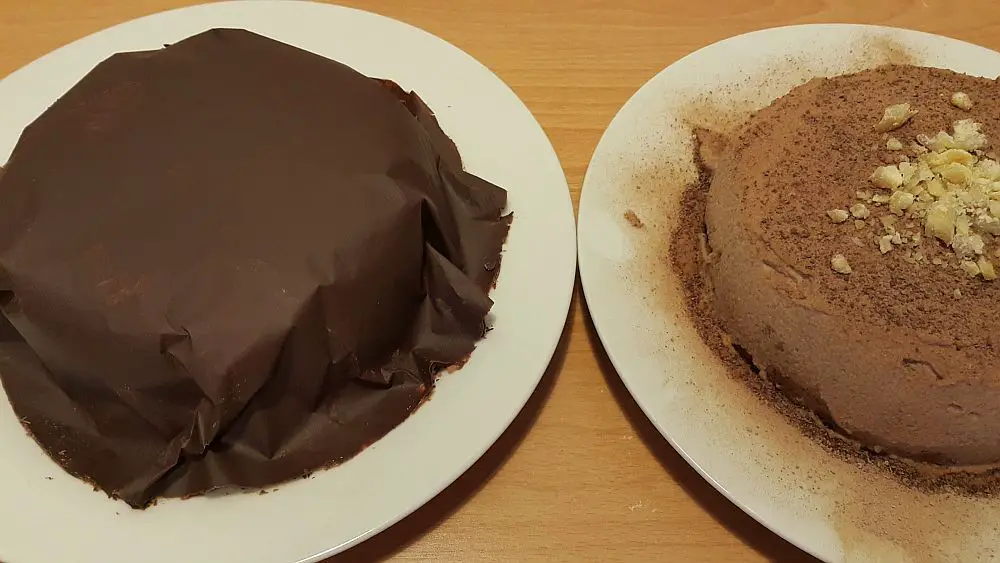
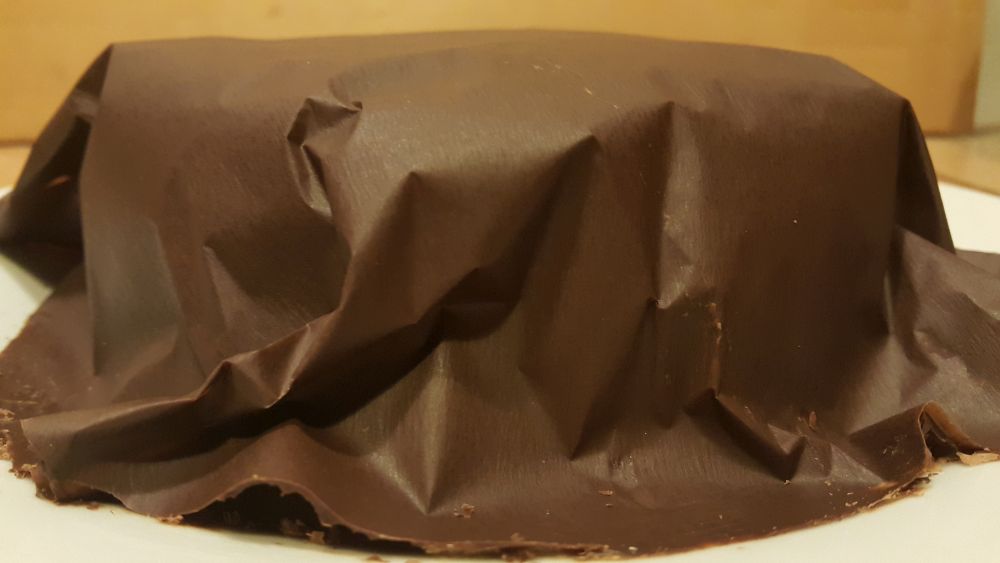
The paper look of the chocolate on the cake is actually achieved with paper: 100-120g of cooking chocolate is melted in a pan which is placed in warm water that should not be heated over 50°C.
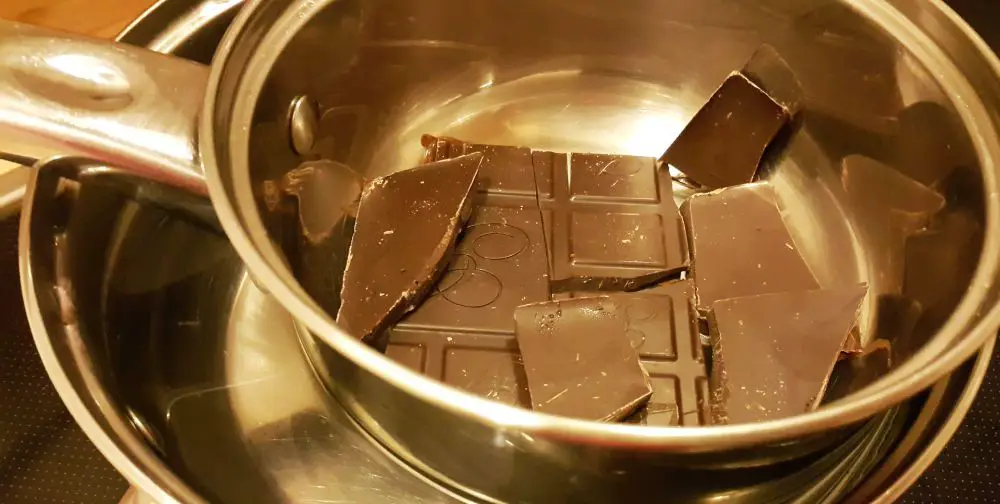
From the baking paper we cut out a circle that should approximately cover the top and sides of the cake.

Spread the chocolate across the paper and let it rest for a minute if the chocolate is too runny.
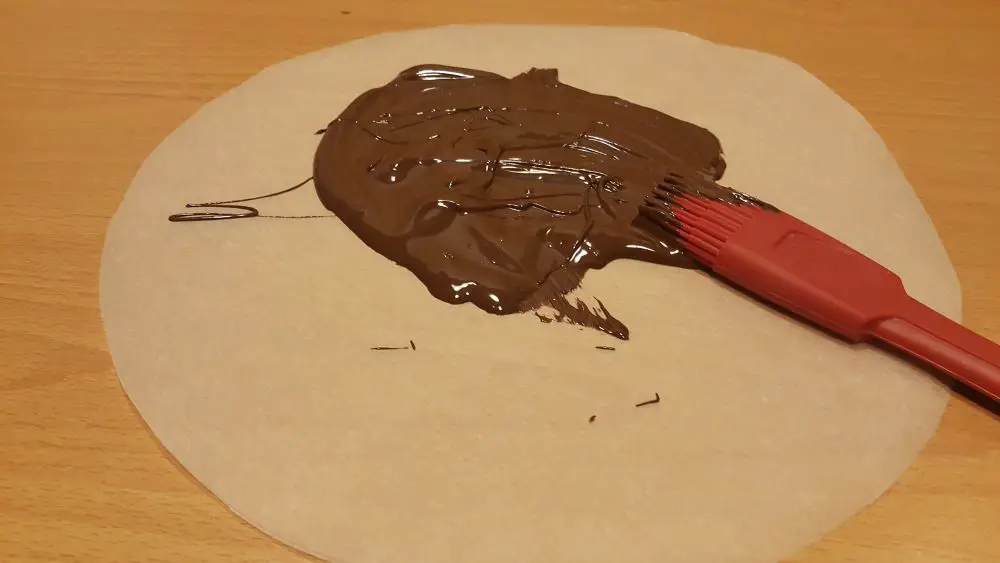
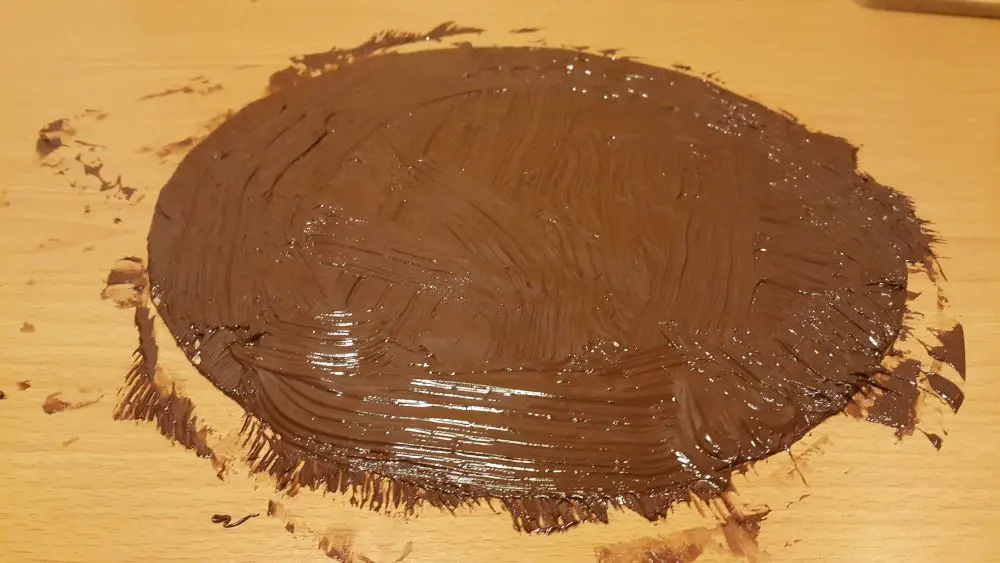
Then grab the sides with two fingers, turn it around and place it on the cake. Smooth it on the surface and press a little at the sides, then place in the fridge till it hardens.
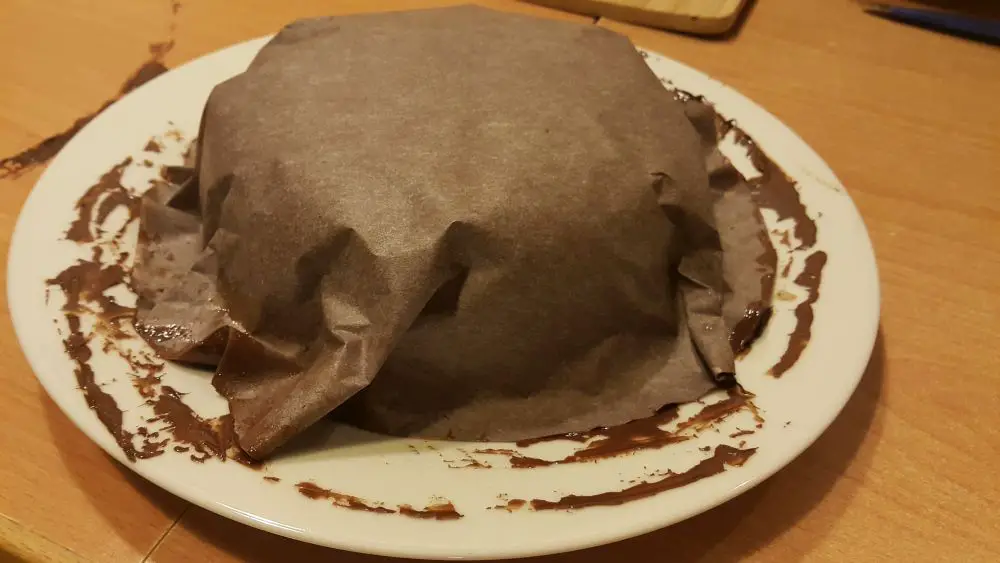
When the chocolate is hard, carefully remove the paper.
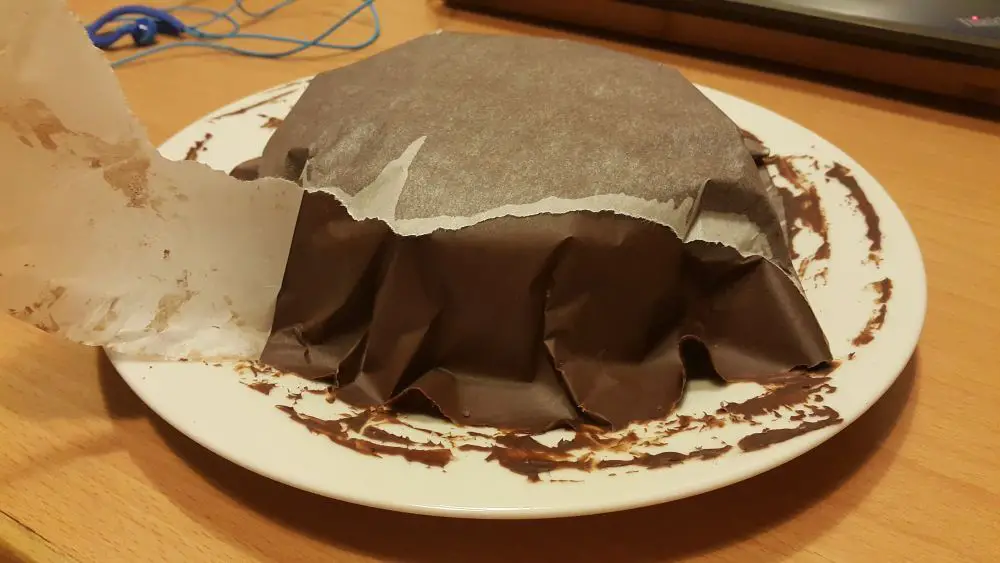
Then clean the plate by scrubbing big bits with a knife and wipe the rest with a warm wet cloth and a dry one after.
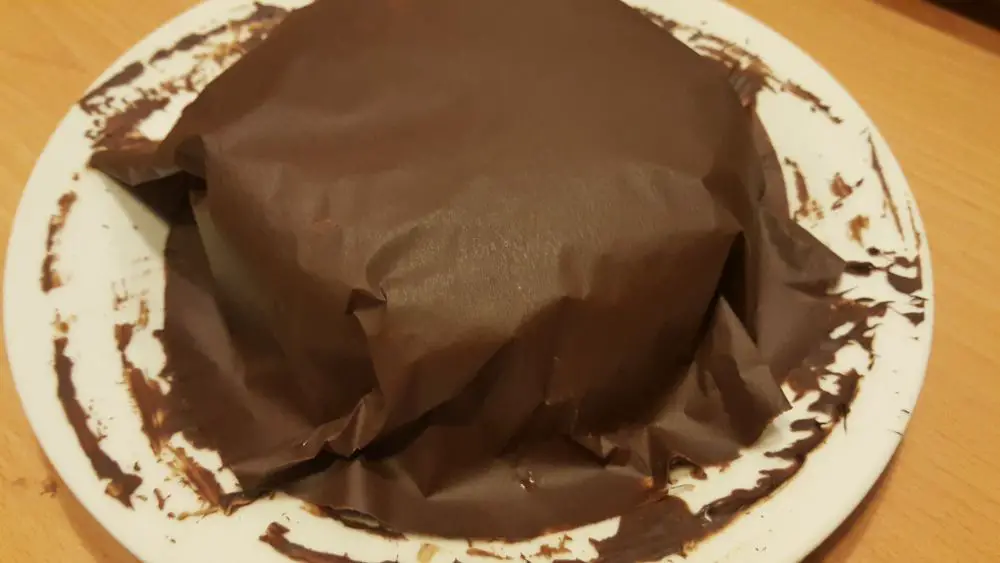
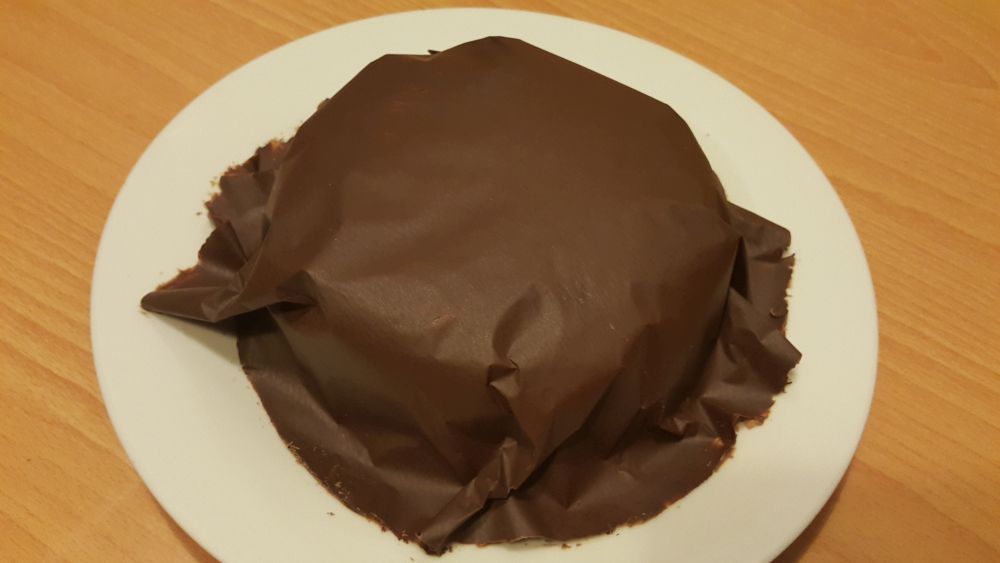
Warm up the knife before cutting to avoid the chocolate crust from cracking.
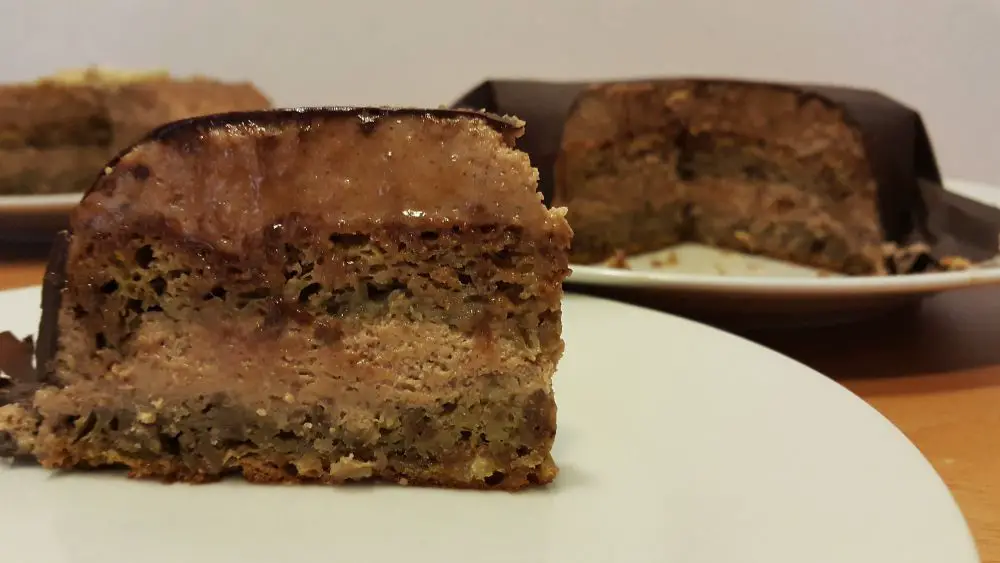
Dober tek!
STA, 20 July 2018 - Slovenian cuisine is to be in Europe's focus as the country turns into a European Region of Gastronomy (ERG) 2021. It will receive the title from the International Institute of Gastronomy, Culture, Arts and Tourism (IGCAT) in October.


